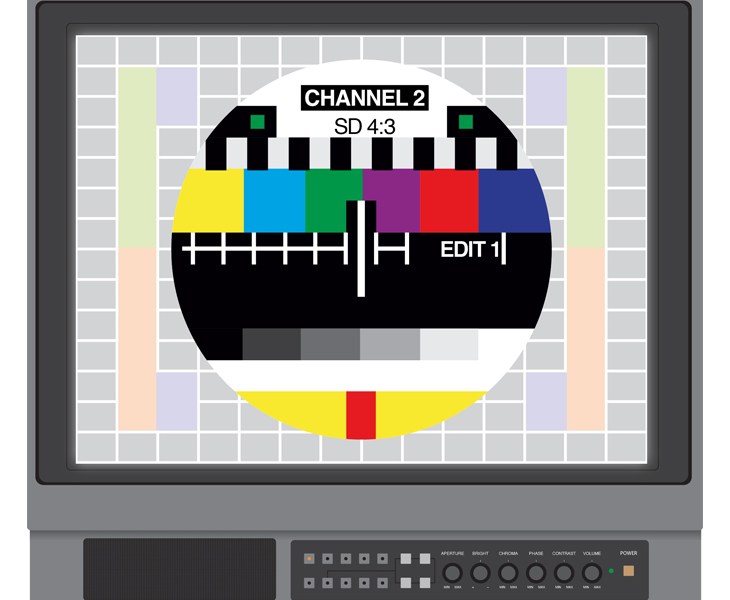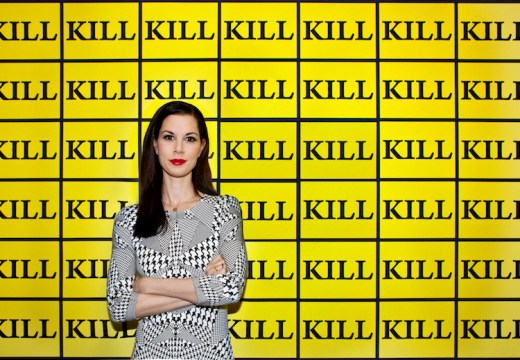To be a conservator means to combine a connoisseurial understanding of the qualities of materials and the mastery of their use with a knowledge of organic chemistry, radiography, and spectral analysis. For most of the field’s history, conservators have been tasked with the stewardship of physical artefacts: painting, sculpture, and works on paper. In the 20th century, however, the adoption of photography, film, video, and computer software by artists meant that once works in these media entered museums, they presented new challenges for conservators.
Contemporary artistic practice has done more than simply add new technologies to the existing range of media that needs to be preserved; the way in which artists themselves work has become iterative, variable, flexible – and multi-format. An artist may use a particular technology today for the first edition in a set of four works, but may employ a wholly different one in the future when fulfilling the third in that set. They may either specify the dimensions and parameters for installation, or they may plan for an artwork to be flexible and variable, depending on the space in which it is installed. This variability is antithetical to the popular notion of conservation, which is usually regarded as an attempt to stop things from changing. Although museums began collecting in response to these new modes of practice surprisingly early, it is only relatively recently that museum conservators began to develop new techniques, philosophies, ethics, and best practices to respond to the new art forms. Various terms have been used to describe these works, but there seems to be agreement around ‘time-based media art’ (and therefore ‘time-based media conservation’), since all these new forms of art, ranging from performance to the execution of software, involve the dimension of time.
The ways in which physical artefacts degrade over time is generally understood: drawings fade, paintings crack, sculptures fall apart – but how does time-based media art degrade? Unfortunately, the ways are endless. With analogue media, video tapes need to be stored in appropriate conditions if they are not to develop mould, or worse, but will eventually wear down with use. Even if the effects of wear can be mitigated, obsolescence is inevitable. Let’s imagine that you bought a piece of video art in the 1980s, and what the gallery gave you is a U-matic tape or, god forbid, a VHS. Even if you never played the tape and stored it in the best of conditions, eventually the hardware required to play it will become impossible to find. Capture to a digital-preservation format has become the only long-term preservation option for such analogue formats. And with every passing year, as equipment becomes harder to source and harder to maintain, the cost of digitisation increases. The same principle applies to artworks stored on floppy or zip disks. In addition to the increasing rarity of the necessary analogue equipment, the numbers of expert technicians and engineers who know how to clean, calibrate, service, and operate this equipment is also shrinking fast.
And just as analogue formats require a working and properly calibrated piece of equipment for playback and digitisation, digital formats require the appropriate software. Today Quicktime is an incredibly common format, and software to play files encoded in this format is readily available, but it is a proprietary product and Apple could get rid of it at any time. All of these problems are distinct technical and material challenges, however one of the biggest threats to time-based media artworks is the fact that most works require ongoing care and attention from conservators as soon as they are made.

Illustration by Tom Lobo Brennan
Although several international museums collected their first works of video art in the late 1970s – the Museum of Modern Art’s acquired works by Martha Rosler and Nam June Paik as long ago as 1975 – the field of time-based media conservation did not truly emerge for another 20 years when the nature of the degradation these works can undergo was beginning to emerge. Today a number of individuals and institutions are furthering the techniques, philosophy, and ethics of time-based media conservation, but this didn’t happen overnight, and the field is still evolving, as are some of the artworks that need to be conserved.
Predictive Engineering, a work first made in 1993 by Julia Scher, demonstrates some of these challenges and practices in action. The surveillance-based artwork was exhibited at SFMOMA as part of the exhibition ‘Thresholds and Enclosures’ and provided an interactive experience wherein cameras and monitors in one of the hallways of the museum recorded and displayed visitors, combining real-time footage, with previously recorded material. The artwork employs technologies that today are ageing and rare, if not entirely obsolete. Predictive Engineering also exemplifies the iterative and variable nature of time-based media art and contemporary artistic practices more generally – Julia Scher has reimagined and recreated it with new technologies in two more site-specific variations at SFMOMA, in 1998, and again in 2016.
When Predictive Engineering was first exhibited, the discipline of time-based media conservation did not even exist. At a conference in the Bay Area called ‘Playback 1996’ art conservators and audiovisual engineers gathered for the first time to discuss the long-term preservation of analogue videotape. As a result, a new special-interest group, called the Electronic Media Group (EMG), was formed within the American Institute for Conservation (AIC), and its meetings remain a valuable place for the exchange of professional knowledge. Also in 1996, the Tate hired a conservator called Pip Laurenson, with an exciting new title: sculpture conservator for electronic media. It would be another 10 years or more before another museum would create a single position in time-based media conservation (even thought it didn’t go by that name at the time).
A paper called ‘An Institutional Approach to the Collections Care of Electronic Art’, published in 1997 by Jill Sterett and Justin Graham of SFMOMA, is one of the earliest examples of an institution sharing its approach to the holistic stewardship of a time-based media artwork, rather than simply focusing on the materiality of video art (what to do with tapes, and so on). The museum was clearly actively engaged in the relevant issues; in 1998, Scher’s Predictive Engineering re-emerged at the SFMOMA with a slightly adjusted title – Predictive Engineering2. The shape, size, and technologies incorporated in the work had all expanded and morphed.
As a result of these and many other initiatives, institutional interest in and support for the field began to grow. In 2006, the Smithsonian Hirshhorn Museum and Sculpture Garden created a postgraduate fellowship in time-based media conservation. In the next couple of years the Museum of Modern Art and the Guggenheim hired their first conservators specialising in time-based media art.
Coming up to the present day, there have been big developments in the last year. For decades the field has remained small, with a few practitioners dispersed at the world’s largest contemporary art museums. But we seem to have reached a tipping point. Not only have the teams at pioneering institutions such as the Tate, Guggenheim, MoMA and SFMOMA grown, but smaller institutions now have a much greater awareness of the challenges presented by time-based works in their permanent collections. Some institutions are creating their own time-based media conservator positions, and others are retraining existing staff. Firstly, MoMA now offers a series of fully funded workshops in time-based media conservation for conservators and other museum professionals whose expertise may be in contemporary art or photographs, or other media, and who want to retrain. Secondly, the very first time-based media conservation training programme has been founded in the United States – at New York University’s Institute of Fine Arts, with a grant from the Andrew W. Mellon Foundation. (Previously, if you wanted to receive specialised training as a conservator of time-based media art, you would either have to cobble together an interdisciplinary training from various disparate programmes, or attend the University of Applied Sciences in Bern, Switzerland). Thirdly, the Tate recently received a grant of $1.5 million – also from the Mellon Foundation – to advance the pioneering work their team is already doing.
For the third version of Julia Scher’s Predictive Engineering in 2016, SFMOMA worked with the artist and a team of more than 15 conservators, curators, engineers, and scholars to consider how a new iteration of the artwork could be created, and how it should evolve from the previous version. Interestingly, this time around, the work was given a new title – Predictive Engineering3 – but rather than being dated with the year of its reiteration, it is dated 1993–present. This infinite dating elegantly conveys the nature of both Scher’s work and the nature of much contemporary practice.
Parallel with developments in institutions, a need for conservation expertise has been slowly growing in the commercial art world. There seems to be more time-based media art on the art-fair circuit and its collectors are no longer limited to the very top tier of contemporary collectors who were once early adopters. The use of video and software as artistic materials perhaps feels more relevant to a new generation of emerging artists and a new generation of collectors. This shift in turn has created the need for time-based media conservation expertise outside the walls of institutions – expertise that is available to collectors, artists, galleries, and auction houses. At present there are a mere handful of private conservation practices specialising in time-based media art, but the number will grow. New technologies emerge each year, and artists are there poking and prodding these technologies, and appropriating them for art. The field of conservation is of course pushed forward not by conservators, but rather by the artists who challenge us to develop new techniques, and to continually reshape and recast our notions of authenticity, permanence, and change.
From the April issue of Apollo. Preview and subscribe here.
Unlimited access from just $16 every 3 months
Subscribe to get unlimited and exclusive access to the top art stories, interviews and exhibition reviews.














![Masterpiece [Re]discovery 2022. Photo: Ben Fisher Photography, courtesy of Masterpiece London](http://www.apollo-magazine.com/wp-content/uploads/2022/07/MPL2022_4263.jpg)
It’s time for the government of London to return to its rightful home